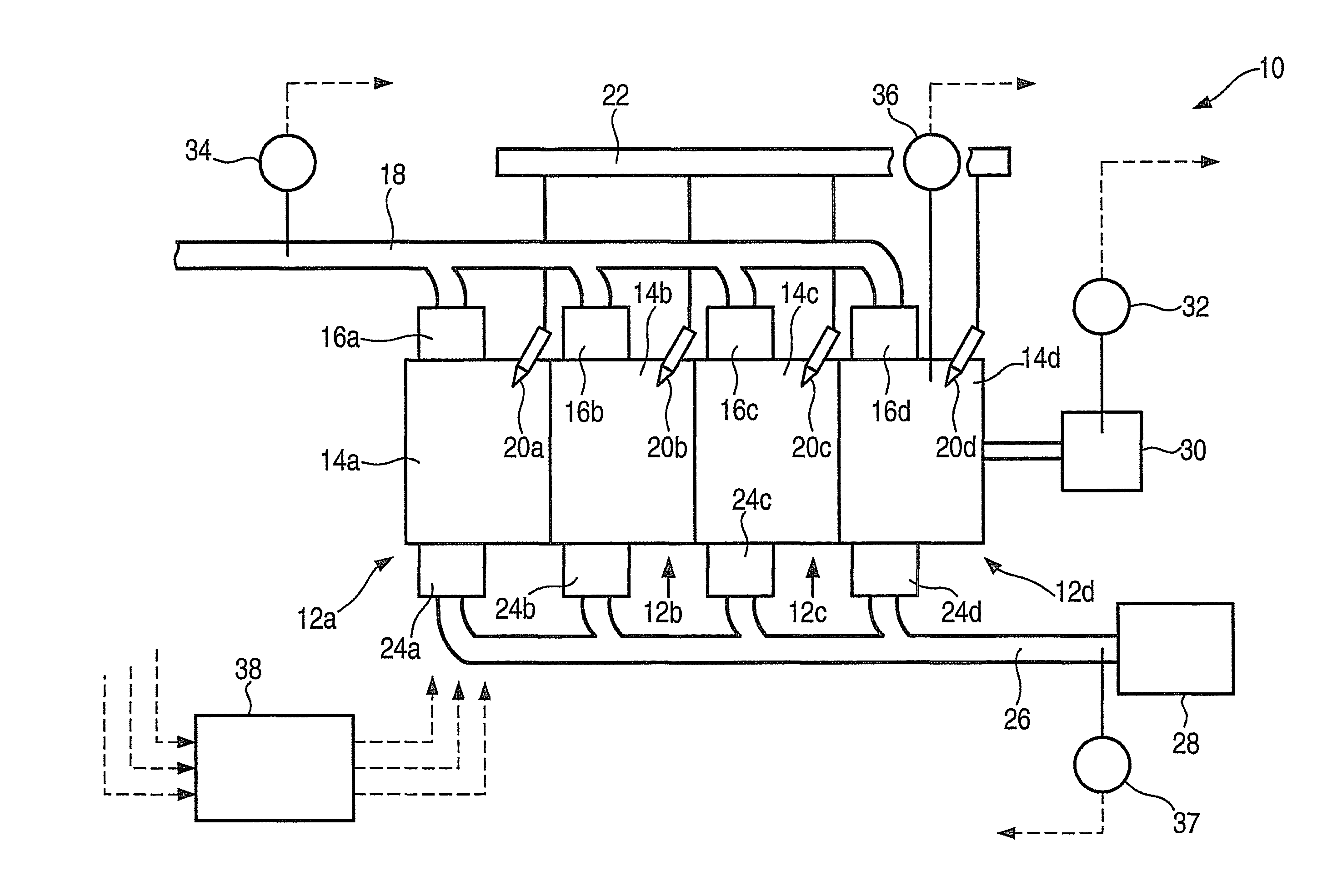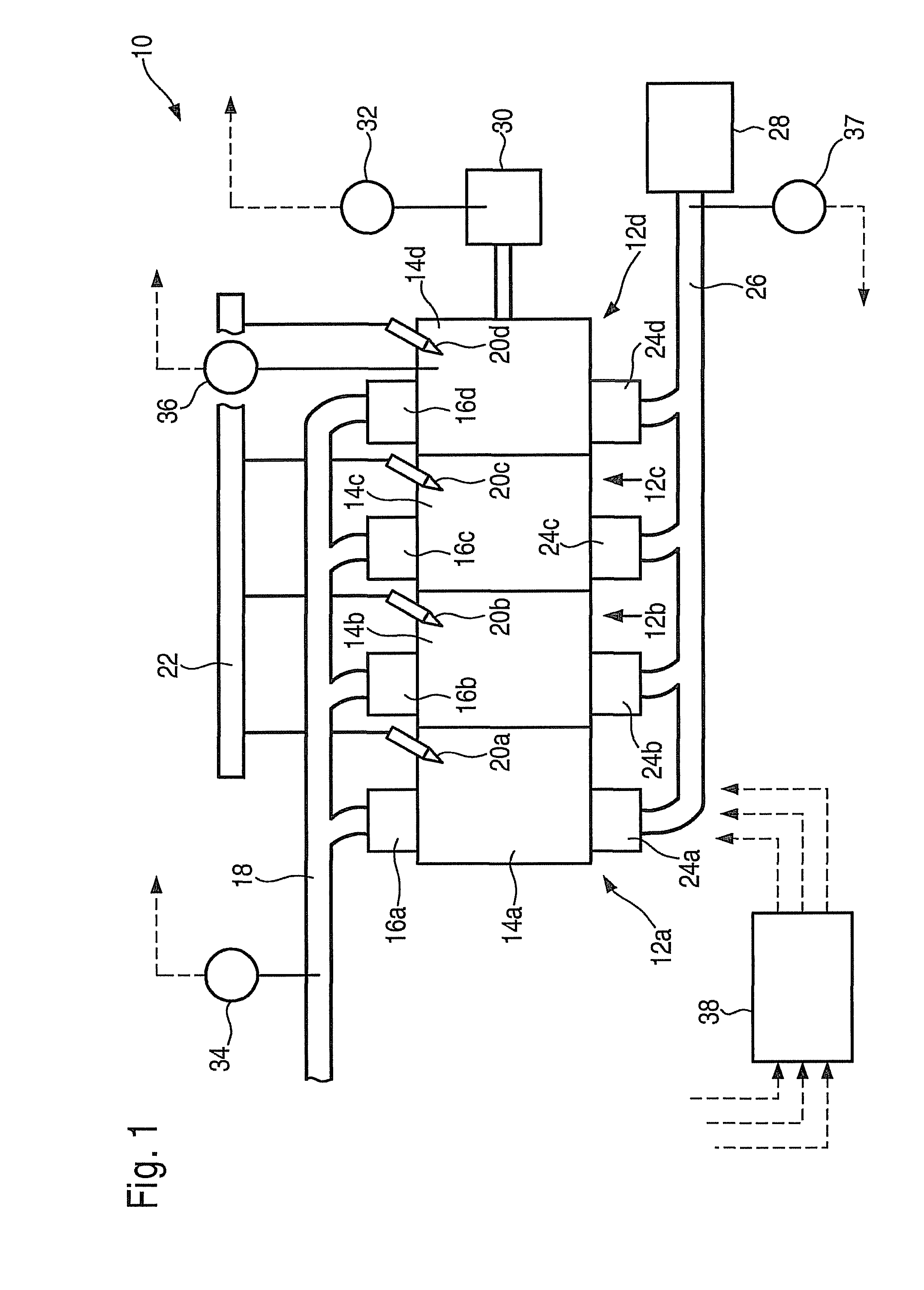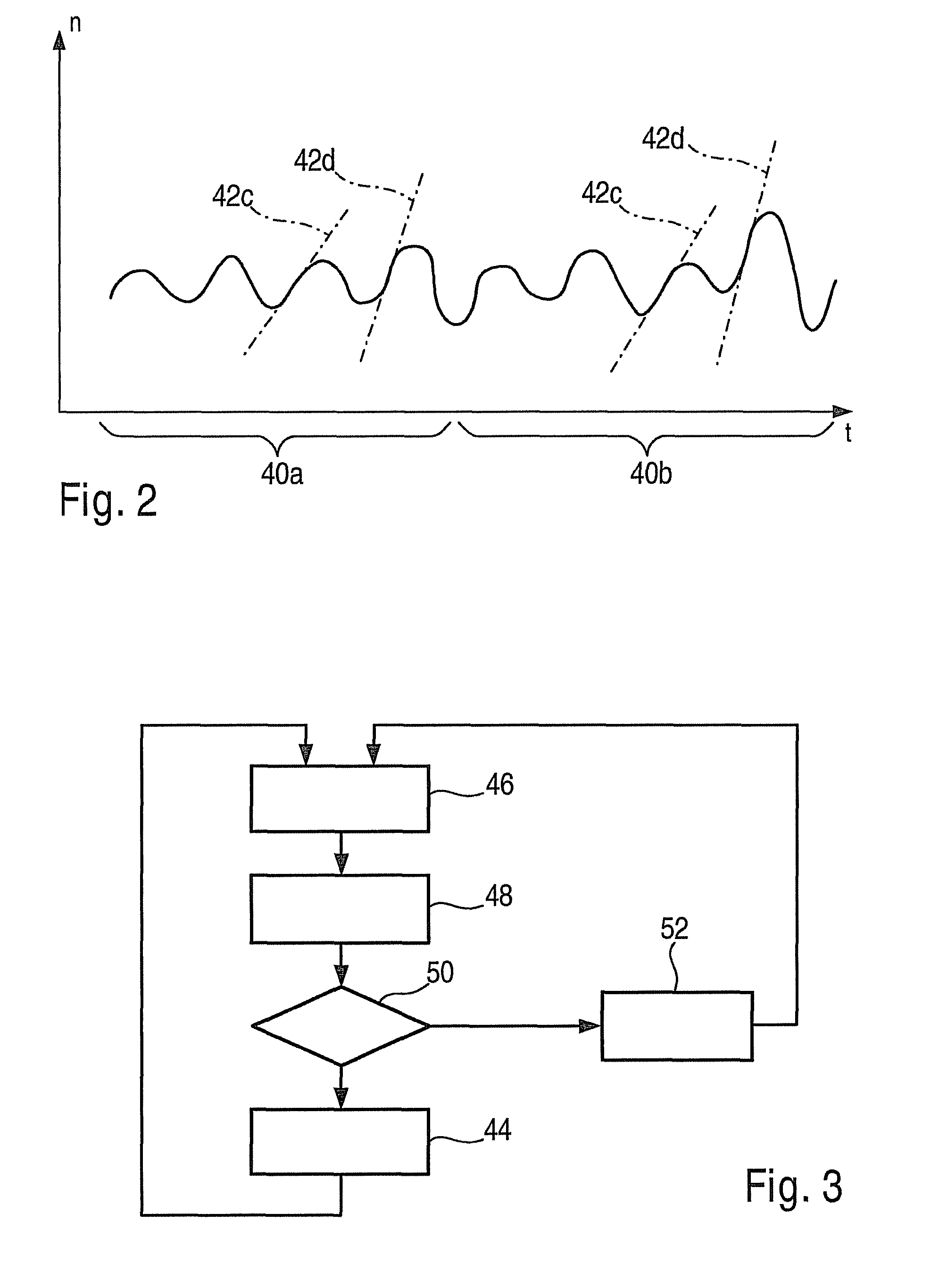Method for operating an internal combustion engine
a technology of internal combustion engine and combustion chamber, which is applied in the direction of electrical control, process and machine control, instruments, etc., can solve the problems of delayed combustion, inability to operate the internal combustion engine with such a “non-conventional” combustion process, and inability to achieve the operation of the internal combustion engine, etc., and achieve the effect of great expenditur
- Summary
- Abstract
- Description
- Claims
- Application Information
AI Technical Summary
Benefits of technology
Problems solved by technology
Method used
Image
Examples
Embodiment Construction
[0021]In FIG. 1, an internal combustion engine is designated overall by reference numeral 10. In the case at hand, it includes a total of four cylinders 12a, 12b, 12c and 12d. They in turn are provided with combustion chambers 14a through d, into which fresh air arrives via an intake valve 16a through d and an intake manifold 18. Fuel is injected into combustion chambers 14a through d through injectors 20a through d, which are connected to a shared high-pressure fuel accumulator 22, also known as a “rail.”
[0022]Combustion exhaust gases are conducted out of combustion chambers 14a through d with the aid of exhaust valves 24a through d into an exhaust pipe 26 to an exhaust-gas treatment device 28. During operation of internal combustion engine 10, a crankshaft 30 is set into rotation whose speed, i.e., rotational speed and rotational acceleration (=“rotation variables”), is recorded by a crankshaft sensor 32 having extremely high time resolution. A fresh-air mass flowing via intake ma...
PUM
 Login to View More
Login to View More Abstract
Description
Claims
Application Information
 Login to View More
Login to View More - R&D
- Intellectual Property
- Life Sciences
- Materials
- Tech Scout
- Unparalleled Data Quality
- Higher Quality Content
- 60% Fewer Hallucinations
Browse by: Latest US Patents, China's latest patents, Technical Efficacy Thesaurus, Application Domain, Technology Topic, Popular Technical Reports.
© 2025 PatSnap. All rights reserved.Legal|Privacy policy|Modern Slavery Act Transparency Statement|Sitemap|About US| Contact US: help@patsnap.com



